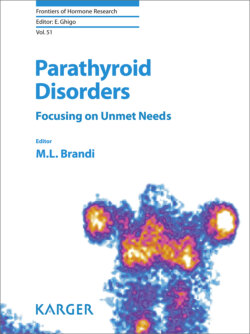Читать книгу Parathyroid Disorders - Группа авторов - Страница 11
На сайте Литреса книга снята с продажи.
Hypercalcemia and Differential Diagnosis
ОглавлениеThe severity of hypercalcemia may be classified based on total serum and ionized calcium levels, as indicated in Table 1. The differential diagnosis for hypercalcemia includes an extensive group of disorders. The most common disorders include PHPT, malignancy, granulomatous diseases, and medications. Hypercalcemia may be distinguished in parathyroid-hypercalcemia and nonparathyroid hypercalcemia. The PTH-dependent family of hypercalcemic disorders includes primary and tertiary hyperparathyroidism, their inherited variants, and familiar hypocalciuric hypercalcemia [7]. These disorders are described in the Primary Hyperparathyroidism section below.
Malignancy-associated hypercalcemia represents approximately 90% of cases of hypercalcemia among hospitalized patients. About 20–30% of patients with cancer have hypercalcemia during the course of the disease, and its occurrence may signify an unfavorable prognosis [8]. Of the cases that result from malignancy, approximately 80% are due to the effects of PTH-related peptide (PTHrP), while the other 20% are due to bone metastases. Hypercalcemia secondary to malignancy may be classified into the following 4 types, based on the mechanism involved:
